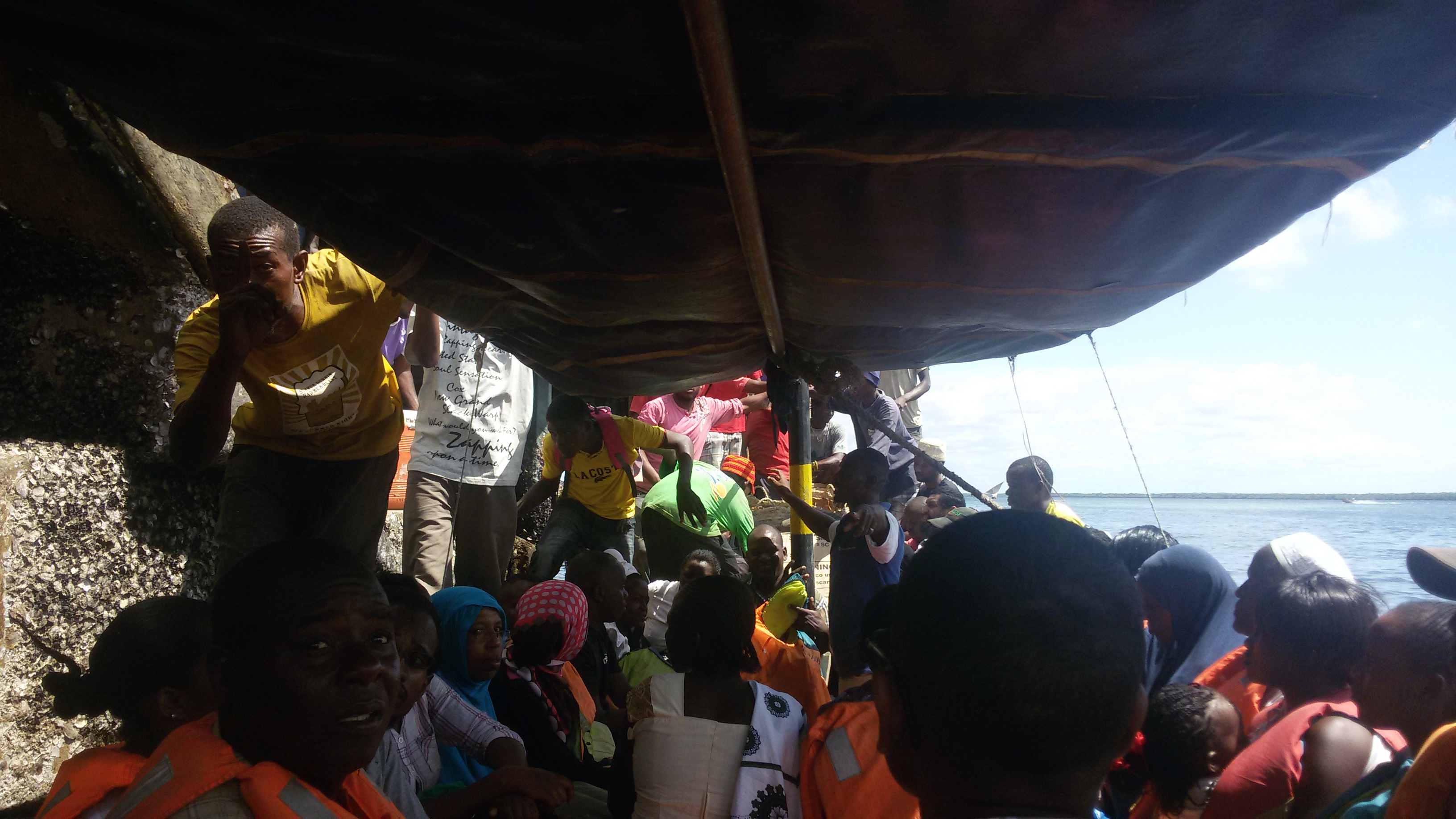The journey from Diani Beach (South Coast, Kenya) to Kilifi (North Coast) by public transport is long, sweaty and chaotic. (Indeed, going just about anywhere in Kenya is all of these things.)
It involves a matatu(bus) to the main road, and another to almost-Mombasa. Each is filled to capacity, quite likely blaring rap music or Kenyan pop, and located only by navigating an insistent throng of taxi drivers, hangers-on of indeterminate employment and buses bound for every direction.
A ferry packed end-to-end crosses into Mombasa proper—a sort-of island linked on most sides by bridges–and then, with luck, a coach bus may be waiting at the other side, saving an extra ride to the station. A man stands at the top of the ramp from the water shouting, “,Malindi-Kilifi-Malindi-Kilifi-Malindi-Kilifi,”without pause. In the crush of the crowd, one could hardly understand him.
And it’s not over yet. The bus will let off in Kilifi Town, a 15+ minute tuk tuk ride from the Creek, and the Distant Relatives Ecolodge.
We made this journey just over a month ago, and I have since settled into the easy tranquility of the lodge, the nearby beach and the comfortable isolation of the place. When I do go into town—relatively laid back when compared to Nairobi—I am thrown off by the sudden return to chaos, stares, noise and confusion.
Thinking back to that trip from Diani, as well as the much longer odyssey from Western Kenya, I recall the sweat trickling down my spine as I sat wedged between two ample-sized women in the back row of a matatu, the weight of my purse on my thighs an added layer of heat. I remember the stillness of the air on the coach bus waiting for traffic to clear, the noise of the speakers just above my head, the inescapable midday sun over the ferry and the coating of grime that covered my skin by the time we reached Kilifi. And that was only a few hours.
But that is, I believe, an essential part of travel.
Comfortably ensconced in the coastal paradise I currently call home, I feel a decided aversion to the unpleasant harassment and disorder of going into town. I contemplate another day of bus journeys, sweat-soaked clothing and dirt-covered hair with reluctance. I am loathe to invite back the arguments and anxiety that naturally accompany reams of buses, unfamiliar routes and missed stops.
But, if I left all that out of the equation, where would the challenge be?
Stress has always, always been an inconsequential—yet, paradoxically, fundamental—footnote to my travels. Bumbling through Italy with my family—utterly lost; wandering the streets of Istanbul with my best friend, utterly lost; scouring Kolkata for a guest house alone, utterly lost. Anxiously running to catch trains; bartering for taxis, tuk tuks, motorcycles, often walking instead in stubborn frustration; searching for addresses, waiting for rides or fruitlessly seeking a quiet corner to regroup—stress and adrenaline saturating my blood.
None of it is fun, and most of it gets pushed to the sidelines of our and rose-toned memories of voyages and adventures. But it is all travel.
That stress means I am stretching the limits of my comfort zone, crossing boundaries and pushing myself to be both stronger and more pliant. No, I don’t like it, and sometimes I allow it to get the best of me, but stress should be a (manageable, eventually forgettable) part of travel.
If travel isn’t just a little stressful at times, and all-out infuriating at others, then what is it? Because if it’s too easy, then it isn’t challenging; and if it isn’t challenging, then I’m not learning or growing as much as I could.
I’ll take sweat, stress and anxious searching over stagnation any day… When’s my next bus ride?

Thanks for sharing this article, its been a really fun interesting read!
Chicago Motor Coach